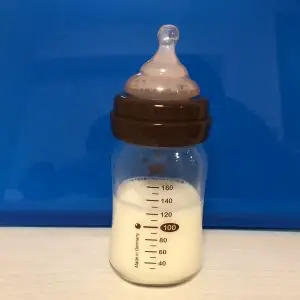Table of Contents
Introduction
If you decide to formula-feed your baby, you are doing the right thing based on what you feel is the best thing to do. Breastfeeding is not for everyone, and that is okay since fed is always best. Sometimes moms are unable to breastfeed because of having to go on medications or for other reasons that will not allow them to do that. The thought likely crossed your mind about what moms in the old days did when the baby formula was not an option. Let’s talk about that, but first, let’s detail the baby formula’s invention and when that happened.
When Did Baby Formula Exist?
For many millennia breastmilk was always known to nourish the baby the best way. However, many mothers throughout history were unable to breastfeed, which I will delve into a bit. For now, let’s talk about the invention of baby formula.
The invention of infant formula happened during the year 1865 by German scientist Justus von Liebig. He developed infant formula consisting of cow’s milk, potassium bicarbonate, malt flour, and wheat. The first infant formula was patented as well as marketed as baby food. The first form of this formula was in the form of liquid, which later became powder as that made preservation of it possible. However, Justus von Liebig was not the inventor of food preservation.
Food preservation became a thing in 1810 by a French inventor, Nicholas Appert. Appert was known as ‘the father of canning’ as he invented airtight food preservation, which led to the invention of formula. Then in 1835, Englishman William Newton invented evaporated milk. In 1853, sugar was added to it by American Gale Borden, which turned into a popular baby food called Eagle Brand Condensed Milk. The brand still exists.
That all occurred, which led to the baby formula invention in 1865. However, even though the first baby formula consisted of a lot of fat, which was essential for the baby’s development, it lacked nutritional value. The discovery happened years later, which is when scientists were improving the baby formula by adding nutrients.
Thankfully, infant formula has come a long way since then. Even though you cannot compare it to breastmilk because breastmilk is natural – it contains essential nutrients and fats required for the baby’s healthy development. What did mothers do during times before the 19th century who were unable to breastfeed?
How Did Non-Breastfeeding Mothers Feed Their Babies Centuries Ago?
That is something that many moms often ask. How were infants fed by mothers who could not breastfeed? What non-breastfeeding moms did was engage in a feeding practice for their babies known as wet nursing. Wet nursing involved moms allowing their infants to nurse from other moms, and this practice went on for thousands of years. Some cases of wet nursing exist even today.
Wet nursing was also a necessity since, sadly, many mothers died during childbirth. Remember that medical advancement was not a thing of the past. Other moms could not breastfeed due to poor health. That is something that often happens today.
Another thing that moms did to feed their babies was that they provided their infants with animals’ milk through clay vessels. Babies drank sheep, pig, goat, horse, camel, or donkey milk as a way to feed them if their mothers could not breastfeed them. However, those clay vessels were not clean, and unfortunately, babies ended up with severe infections as a result.
Over time, the invention of wooden vessels happened for feeding babies animals’ milk, which was a better alternative than clay vessels. Then a few centuries ago, mothers often spoonfed cow’s milk to their babies or soaked it in bread for their infants to drink.
Until the 19th century, the invention of the bottle and nipple happened around the same time as the formula invention. You just learned a fascinating history lesson on baby formula. Let’s talk about the cost of formula today.
How Much Is Baby Formula?
The one drawback with baby formula is that it can be costly as the average infant formula cost is from $1,200 to $1,500 a year. However, non-breastfeeding moms know that infant formula costs a pretty penny, which is one expense they prepare themselves to have. When it comes to buying the best food for their infants, moms would rather pay for good-quality baby formula than formula, not of the best quality.
One way to save money is to clip coupons or to look for discounts and sales. Baby formula is often on sale in various supermarkets, and plenty of coupons moms can clip—that the cost does not have to be so astronomical.
Conclusion
Not all moms can breastfeed their babies. Therefore, they opt to give their infants formula, and these moms want to look for the best kind even if that means they have to pay more money. At the same time, these moms often wonder what non-breastfeeding moms did to provide their infants with adequate nourishment. Wet nursing or feeding babies animals’ milk were the methods to feed babies if breastfeeding wasn’t an option. That was until the 19th century when the invention of evaporated milk and baby formula happened. Fortunately, since then, baby formula is of excellent quality as it contains the right amount of nutrients and fats that infants need to thrive.

